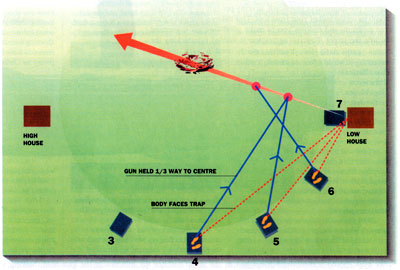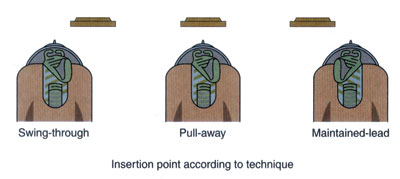
|
The
Gazette
Respecting Skeet • Tips and Techniques |
| Respecting Skeet |
|||
|
|
|
|
Lead
is a mystery to many beginners and some never really understand it
or its application. Putting aside distance and target speed, the
major impact on the amount of perceived lead is the angle created
between the shot string and the target flight line when the shot
is taken. This phenomenon is readily observed and learned on the Skeet range. For example, if the Low House target is shot from Station 3, the shot string is intercepting the target flight line at an angle of 90 degrees. This requires a perceived lead of 3 to 4 feet. Moving to Station 7 and shooting the Low House target, the shot string and target line angle is nil, so no lead is required. The speed and distance of the angle has not changed, only the angle of interception has changed. |
 Correct - foot position for the right-handed shot would mean the belt buckle facing into the low house window. |
||
|
At
each station, perceived lead changes. With over 14 angles in any
one round, Skeet quickly teaches the Beginner about perceived lead
and how to apply it. These lessons are then readily applied to
Sporting Clays. On any station, a Sporting Clays target can be
compared to a similar Skeet target, with the lead increased or
decreased according to the angle of the shot string and target
flight line. |
||

